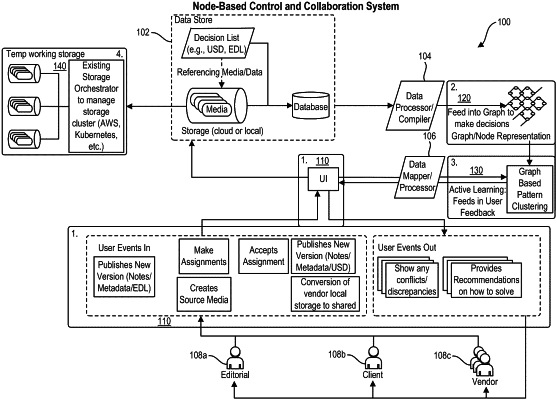| CPC G06Q 10/101 (2013.01) [G06F 21/6218 (2013.01); G06Q 10/063114 (2013.01); G06F 2221/2141 (2013.01)] | 8 Claims |

|
1. A system comprising:
a processing hardware, a user interface (UI), and a system memory storing a software code and a conflict avoidance machine learning (ML) model trained using a deep reinforcement learning;
the processing hardware configured to execute the software code to:
receive from a first user, via the UI, project data describing a project including a plurality of tasks;
determine, using the project data, a node-based graph of the project including the plurality of tasks;
receive from one of the first user or a second user, via the UI, task action data producing a modification to the node-based graph;
identify, based on the modification to the node-based graph, a conflict among at least two nodes of the node-based graph;
predict, using the conflict avoidance ML model and the conflict, one or more candidate strategies for resolving the conflict;
identify, using the conflict avoidance ML model and based on the one or more candidate strategies in an automated process independent of the first user and the second user, a conflict avoidance strategy for resolving the conflict, wherein the conflict avoidance strategy comprises decoupling a node of the node-based graph;
display, via the UI, the node-based graph, a conflict alert indicating the node in the node-based graph and the conflict avoidance strategy to the one of the first user or the second user;
receive, via the UI, an input from the one of the first user or the second user to decouple the node indicated by the conflict alert;
in response to receiving the input, decouple the node indicated by the conflict alert;
display, via the UI, the node-based graph with the node decoupled from the node-based graph; and
further train the conflict avoidance ML model, using the deep reinforcement learning and the input from the one of the first user or the second user, to improve the conflict avoidance ML model in a feedback loop.
|